Three Of New York's Odder Patriotic Relics
by Olivia LaVecchia
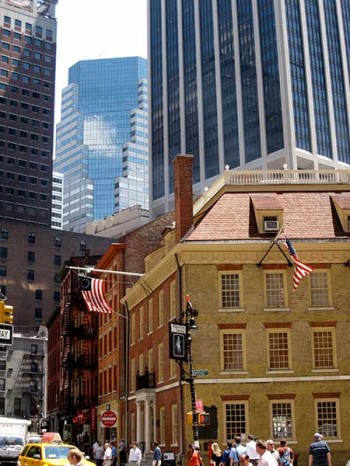
As much as New York City has its own peculiar history, it’s well mixed-up with America’s, too: The Battle of Brooklyn was the largest of the Revolutionary War, and there was that one glorious year when the city was the nation’s capital. You can visit Lady Liberty, of course, but if you’d prefer something more off-the-beaten track, here are three patriotic, NYC-based relics you could pilgrimage to this weekend For America.
Hair And Dentures Of George Washington, Fraunces Tavern
Walking up to Fraunces Tavern causes a sort of temporal vertigo: You turn the corner of a sleek skyscraper; you push past the financial-district suits; and there’s a wood-and-brick building with stories that can be measured in the single digits, waving an American flag with only 13 stars. The building (or, at least, a building on this spot) was first built in 1719 as a private residence, but, the area having grown unfashionable, the wealthy family who owned it sold it to a tavern-keeper in 1762. The tavern’s claim to fame came on Dec. 4, 1783, when George Washington sat down in its Long Room and delivered a farewell address to his officers.
Today, after eating at the restaurant on the first floor, you can head upstairs to a two-level museum and visit that same Long Room. Better for our purposes, you can view a lock of Washington’s hair, a chip of his original wooden coffin and a sliver from his dentures.
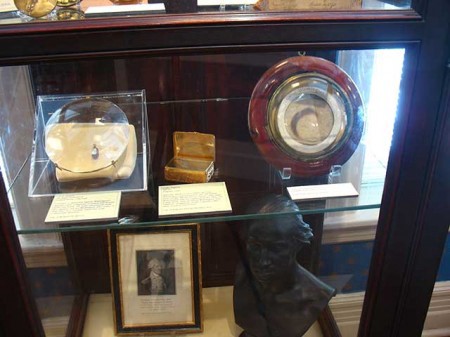
This isn’t a full tooth, mind you. I was expecting a molar, maybe even a canine (perhaps because those are the only tooth names I know — incisor?), but was pleasantly un-disappointed by the actual fragment: a toothpick-like bit displayed behind a large magnifying glass, the apparatus of the glass somehow adding a nice note of gravity to the viewing experience. An identification plaque includes some handy dental-presidential lore, e.g. “Contrary to American legend, Washington’s dentures were composed of animal and human teeth, not wood. Dr. John Greenwood made five separate sets for Washington, who seems to have been in a constant search for more comfortable dentures.” (Did GW have an on-call dentist the way celebrities today have stylists? Big questions.) For this visitor, though, the lock of Washington’s hair was the more exciting specimen, both because of its luster (why would you cover up that chestnut with powder?) and because it’s been DNA tested and found to be 100-percent Founding Father.
The Remains Of Frances Xavier Cabrini, First American Saint
Fifteen years after the Patroness of Immigrants’s death, nuns transferring her remains into a chapel found them remarkably well preserved, and not in the wink-wink, nip-tuck sense. As the nuns reported, parts of Cabrini’s body had resisted decay, catapulting her into a class of “incorruptibles” — Catholics whose frames don’t deteriorate on schedule.
Mother Cabrini was nearly 40 when she first arrived in New York from Italy, but she didn’t let that stop her from founding 67 immigrants’ help organizations, criss-crossing back and forth across the Atlantic and picking up a U.S. citizenship along the way. Which meant that, when the Pope canonized her in 1944, she became the first American saint.
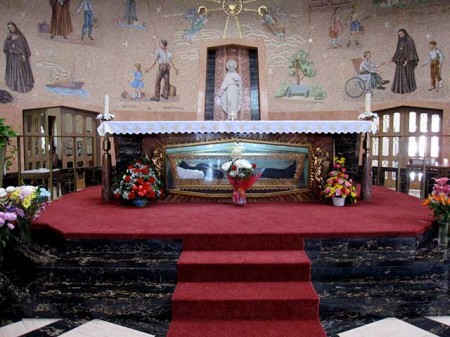
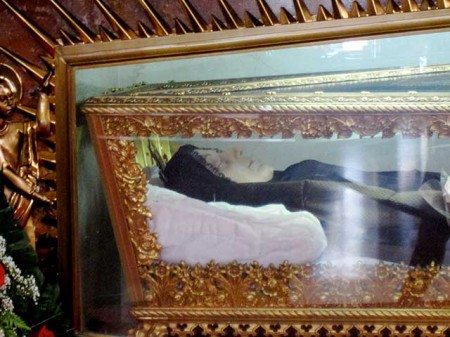
When Cabrini was beatified, those famous remains were placed in a glass-paneled coffin, and later moved to a specially designated shrine. To visit, catch the A to 190th, take an elevator to the top of Fort Tryon Park, stare at the Hudson for a second (it looks so blue high up), and walk a half-block to the St. Frances Cabrini Shrine, where she’s on view underneath a semi-transparent altar. Her display outfit is a full-coverage habit, but wax masks cover her face and hands, which makes the whole viewing experience a bit eerie and also causes the viewer (okay, maybe just me) to double-take at first, thinking that “well preserved” is Catholic-speak for “turned into a Saint action figure.”
Train Car Emblem From Lincoln’s Funeral Procession, McSorley’s Ale House
This stop is less credentialed than the other two, but its place of display helps its reputation: Behind the bar at McSorley’s Old Ale House. This East Village pub opened its doors in 1854, served “Near Beer” through Prohibition, only allowed women inside under court order, etc. Along the way, an artist presented his “McSorley’s Bar” painting at the 1913 Armory show; e.e. cummings wrote “I was sitting in mcsorley’s.” So yeah! Kind of an American institution! But since we’re talking about relics, back to this crest.
Just below the tap (read: in a place of prime importance) is a cabinet with Lincoln’s profile and a horseshoe on the right, and on the left, an emblem with the letters B&O; under the Capitol Dome — the symbol of the Baltimore & Ohio Railroad. The emblem is reputed to have come from Lincoln’s funeral train. B&O; was tasked with transporting the president’s body from D.C. to Springfield, Ill., post-assassination, a 13-day, 1,700-mile tour that included processions and open-casket viewings in 11 U.S. cities (not until Chicago, penultimate stop, had the body significantly deteriorated). (Sorry, sorry for the second decomposing-corpse mention, but admit it, you were curious.)
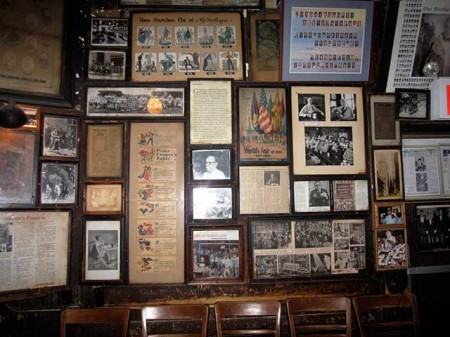
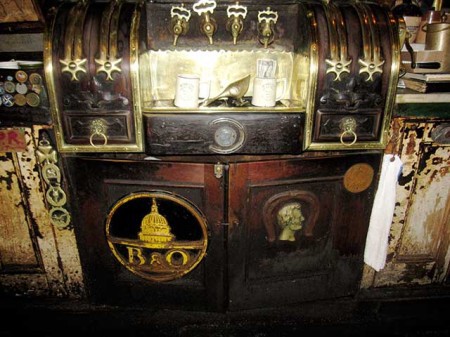
I have no pope certificates or DNA-type tests to confirm this one, just the good authority of the McSorley’s bartender who was there on a recent Wednesday afternoon, handing out beers and kicking around the fresh sawdust. He’s been working at the place “on and off” since the early ’70s. His other decor favorites are an invitation to the opening ceremonies of the Brooklyn Bridge and a weathered, black-and-white shot of four Civil War soldiers re-uniting, 50 or so years later — so if you’re skeptical about the origins of the train car emblem, McSorley’s has other relics to which you can pay your respects.
Olivia LaVecchia is an Awl summer reporter.
